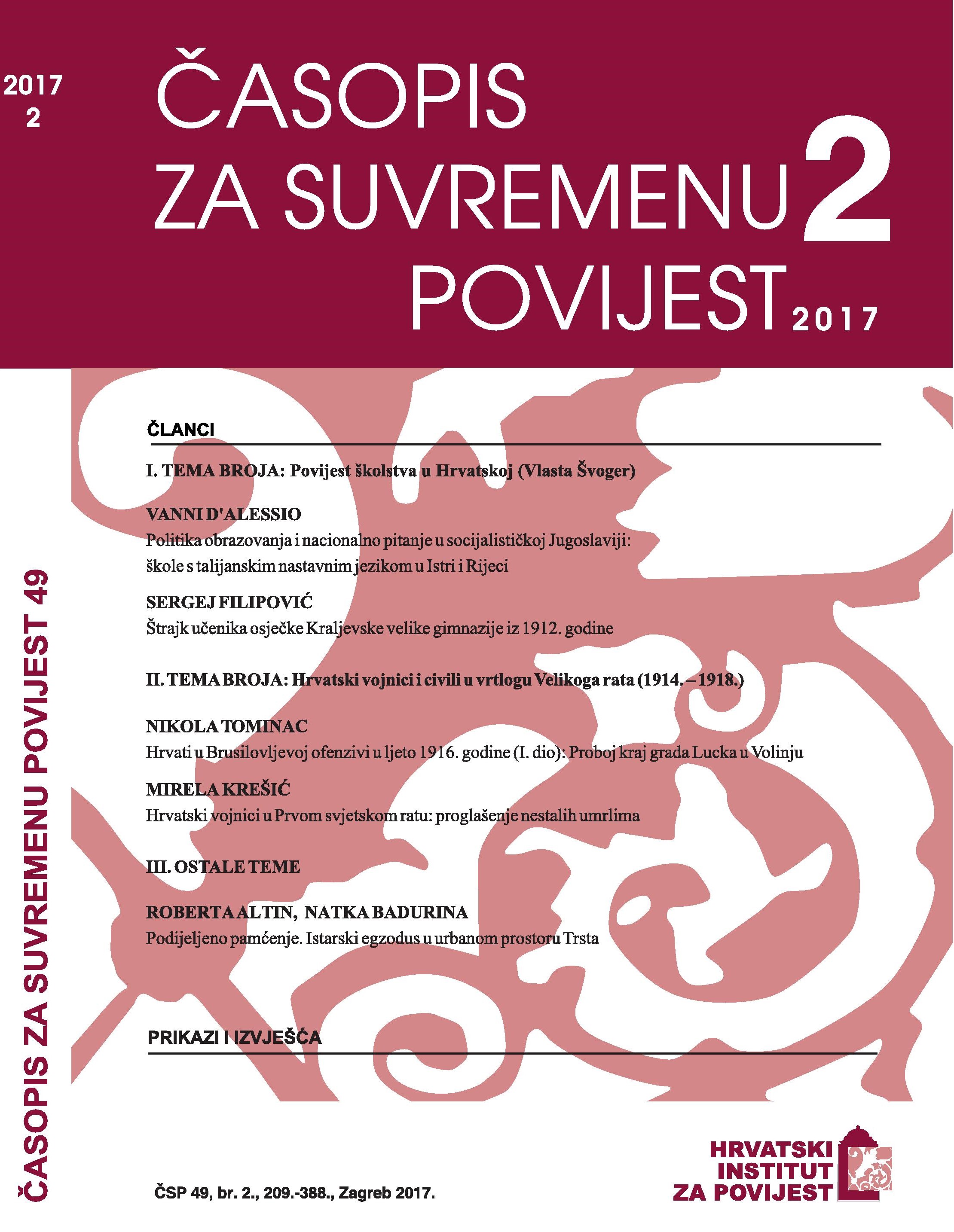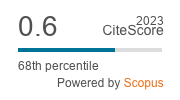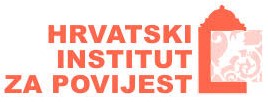The 1912 Royal high School Pupils’ Strike
DOI:
https://doi.org/10.22586/csp.v49i2.37Keywords:
pupils’ strike; pupils’ demonstrations; 1912; Osijek; Royal High School; high school youthAbstract
This paper examines the strike of the pupils of the Royal High School (Kraljevska Velika Gimnazija) in Osijek in 1912 based on archival sources and contemporary press articles. It analyses the reasons behind the strike, describes its course and the consequences for its participants as well as public opinion about it, and then draws certain conclusions. The mentioned strike is placed in the historical context of the events in Croatia, first of all the crisis that erupted after Slavko Cuvaj was appointed as ban (viceroy) of Croatia and dissolved the Croatian Parliament, which triggered a protest among the students at the University of Zagreb. After a clash between the students and the police, the youth of Sarajevo joined the protests out of solidarity. One of the youths, Salih Šahinagić, was wounded, but a rumour circulated that he had died, which turned out untrue, but not before it caused a reaction among high school pupils throughout Croatia, including in Osijek. The Royal High School is used as an example of what the pupils’ strike of 1912 looked like on the local level. First, on 24 February 1912, the pupils of Osijek, having heard of Šahinagić’s wounding, held demonstrations that consisted of moving through the city in procession, singing patriotic songs, and chanting anti-Hungarian paroles. A few days later, when news came that their colleague from Sarajevo had died, the pupils of Osijek decided not to go to school, and went on strike on 28 February 1912. They once again walked through the city, sang patriotic songs, and chanted anti-Hungarian paroles, but this time there was also a minor clash with the City Police Forces. The strike ended the very next day. In March, the strike of high school youths spread from Sušak, through Zagreb, and into other parts of Croatia, since there were fears that the pupils who participated in previous demonstrations would be expelled from their schools. There is little data regarding this strike in Osijek, but it is likely that it lasted only one day, after which the pupils agreed at an assembly that they’d return to school. The public supported the pupils during the strike. The only pupil who was seriously punished for participating in the strike was Mato Mijatović, who was expelled from school. The other pupils were severely reprimanded. The pupils’ strike showed that the new generation of youths was ready to fight for their beliefs, and that the process of their radicalisation was continuing. It would culminate with the assassination of Franz Ferdinand.
Downloads
Published
How to Cite
Issue
Section
License
Copyright (c) 2017 authors and journal

This work is licensed under a Creative Commons Attribution-NonCommercial 4.0 International License.
Copyright holders are the publisher Croatian Institute of History and the authors. Journal of Contemporary History is an Open Access journal. Users are allowed to read, download, copy, redistribute, print, search and link to material, and alter, transform, or build upon the material, or use them for any other lawful purpose as long as they attribute the source in an appropriate manner according to the Creative Commons licence CC BY-NC. The papers published in Journal of Contemporary History can be deposited and self-archived in the institutional and thematic repositories providing the link to the journal's web pages and HRČAK. Journal does not charge article processing charges (APC). The editors assume no responsibility for statements of fact or opinion made by contributors.




